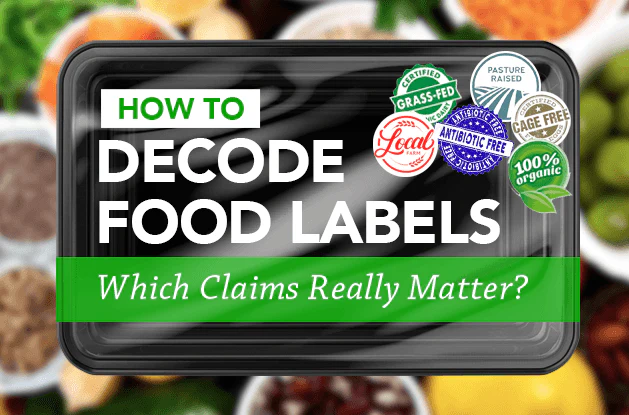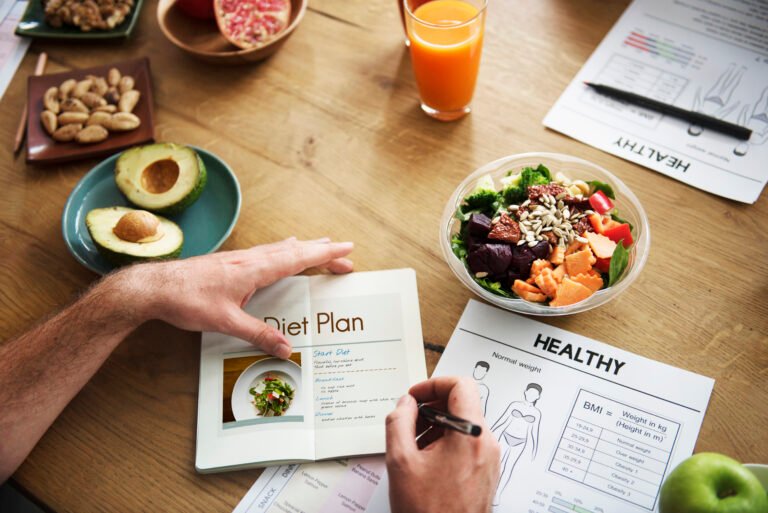Decoding Food Labels: A Smart Guide to Choosing Healthy Packaged Foods
In today’s fast-paced world, even health-conscious eaters rely on packaged foods—from breakfast cereals to energy bars, from salad dressings to snacks. But not all foods labeled “healthy,” “natural,” or “low-fat” are actually good for you.
Understanding food labels is a powerful skill that helps you make informed decisions and avoid hidden sugars, preservatives, or chemicals that harm your health.
At Fresh For Bite, we’re all about smart, practical eating. So let’s break down food labels in simple terms and learn how to spot truly healthy packaged foods.
📦 Why Read Food Labels?
Packaged foods are often processed to some extent. Reading food labels helps you:
- Avoid excess sugar, salt, and fat
- Identify artificial ingredients
- Understand nutritional content
- Spot misleading health claims
- Choose cleaner, whole-food options
🔍 How to Read a Food Label – Step by Step
Let’s explore each part of a typical food label and what to look for.
🧾 1. Ingredients List
Always start here!
- Rule: The shorter, simpler the list, the better.
- Ingredients are listed in descending order by weight—so if sugar is among the top 3, it’s a red flag.
- Avoid items you can’t recognize or pronounce—these are usually additives, emulsifiers, or preservatives.
🔴 Watch out for:
- Added sugars (glucose, fructose, corn syrup, maltodextrin)
- Refined oils (hydrogenated, palm oil)
- Artificial colors or flavors (E numbers, MSG)
⚖️ 2. Serving Size vs. Per 100g
Manufacturers often make a product look healthier by shrinking the serving size.
✔️ Always compare values per 100g or 100ml for an honest picture.
🍭 3. Sugar Content
One of the biggest hidden dangers.
- Anything more than 5g of sugar per 100g is considered moderate to high
- Be cautious with “no added sugar” claims—it might still contain fruit concentrates or sugar alcohols
✅ Healthier alternatives:
- Products sweetened with dates, jaggery, or stevia (in moderation)
🧂 4. Sodium (Salt)
Too much sodium increases your risk of high blood pressure and heart disease.
- Safe limit: Less than 400mg per 100g
- Many snacks, breads, and sauces exceed this, even if they don’t taste “salty”
🧈 5. Fats and Oils
Pay attention to:
- Trans fats: Harmful, should be zero
- Saturated fats: Limit to under 5g per 100g
- Hydrogenated oils: Avoid completely
Prefer foods with:
- Cold-pressed oils
- Seeds or nuts
- Good fats like flaxseed, sunflower, or olive oil
🟢 6. Fiber and Protein
More fiber = better digestion and longer satiety
More protein = better muscle maintenance and blood sugar balance
Look for:
- Fiber > 3g per serving
- Protein > 6g per 100g for snacks or breakfast items
💡 Common Food Label Claims (and What They Really Mean)
| Label Claim | What It Might Really Mean |
|---|---|
| “No added sugar” | May still contain fruit concentrates, sweeteners |
| “Multigrain” | May have only small amounts of whole grains |
| “Low fat” | Often high in sugar or salt to enhance taste |
| “Natural” | No legal definition—may still be processed |
| “Organic” | Only matters if it’s certified by a reliable agency |
| “Gluten-free” | Doesn’t mean healthy—it may be ultra-processed |
🛒 Smart Shopping Tips
- Read the back of the pack, not just the front
- Don’t fall for buzzwords like “diet,” “slim,” “zero”
- Choose products with fewer than 8 ingredients
- Keep a lookout for whole foods at the top of the ingredient list
- Buy local, clean-label products whenever possible
✅ Example: Comparing Two Breakfast Cereals
| Nutrient | Cereal A (Commercial Brand) | Cereal B (Clean Label) |
|---|---|---|
| Sugar | 12g per 100g | 2.5g per 100g |
| Fiber | 1.5g per 100g | 5g per 100g |
| Ingredients | 17 (incl. syrup, additives) | 5 (all natural grains, seeds) |
| Verdict | Overly processed | Clean and nutritious |
🧠 Final Thoughts
Healthy eating doesn’t stop at “low-fat” or “sugar-free” labels. The real power lies in knowing what’s inside your food—and choosing products that are minimally processed, high in fiber, and made from real ingredients.
Next time you’re at the store, turn the pack around, read the label, and decide for yourself. Because your health is in the details.
At Fresh For Bites, we’re here to make nutrition easy, honest, and delicious—with expert guides, clean recipes, and practical wellness tips you can trust.
❓ FAQs: Food Labels & Packaged Foods
1. What are hidden names for sugar on food labels?
Look for glucose, fructose, sucrose, corn syrup, cane juice, maltose, dextrose, agave, and molasses.
2. Is it okay to eat packaged foods daily?
Yes, if they are minimally processed and made with clean, whole ingredients. Avoid ultra-processed foods high in sugar, salt, and chemicals.
3. Which is better—“low fat” or “full fat”?
Depends. Many “low-fat” foods are high in sugar. Opt for full-fat versions made from natural ingredients, in moderation.
4. What is a clean label product?
A clean-label product uses simple, recognizable ingredients without artificial additives or preservatives.
5. Should I completely avoid processed foods?
Not all processed foods are bad. Focus on how processed it is and what it contains. Choose products that are closer to their natural state.



